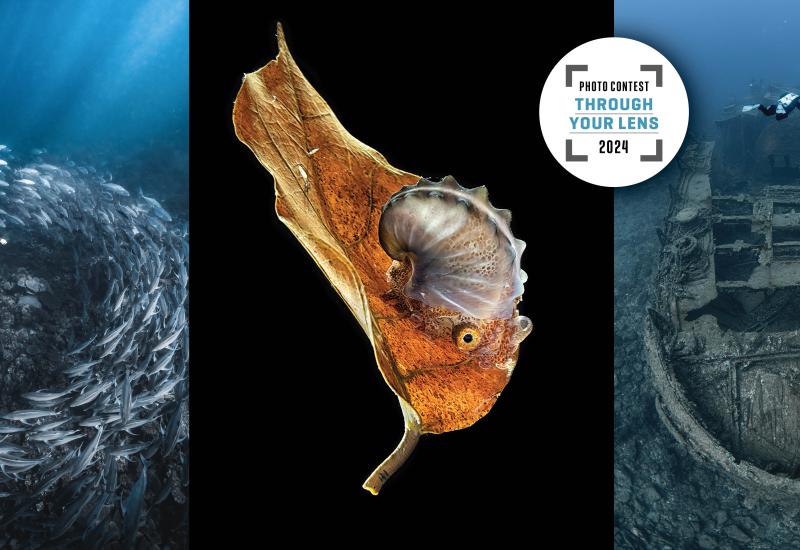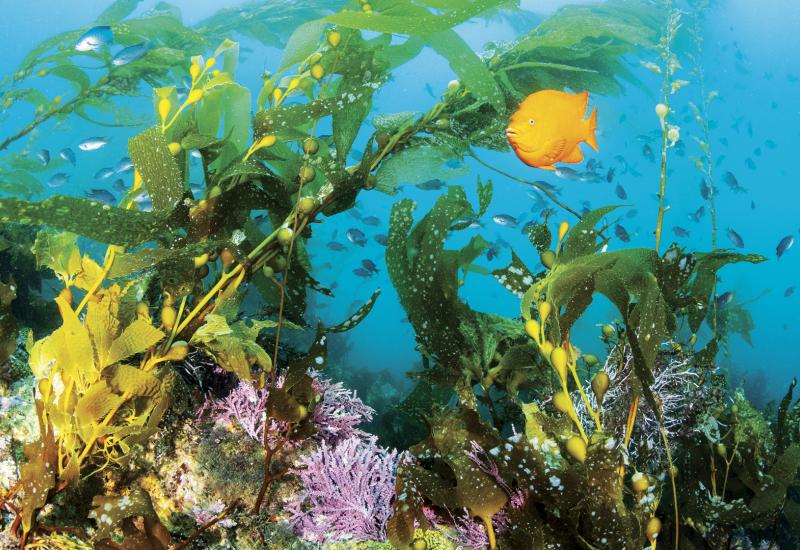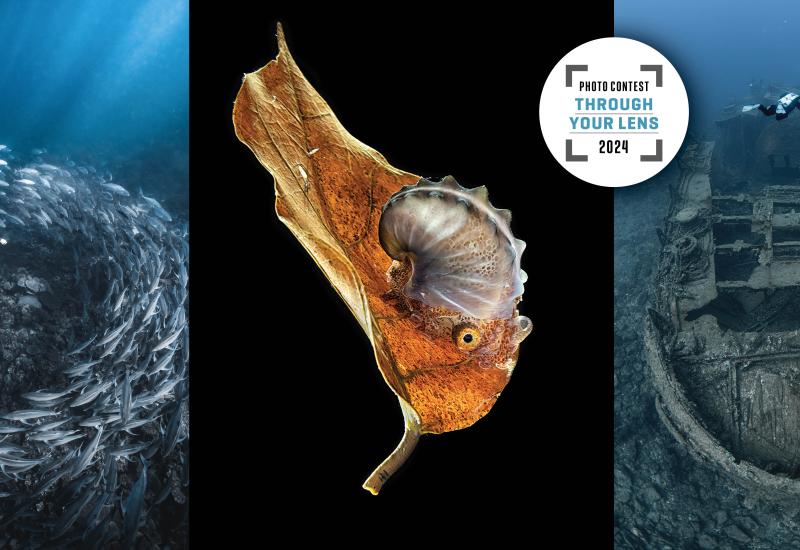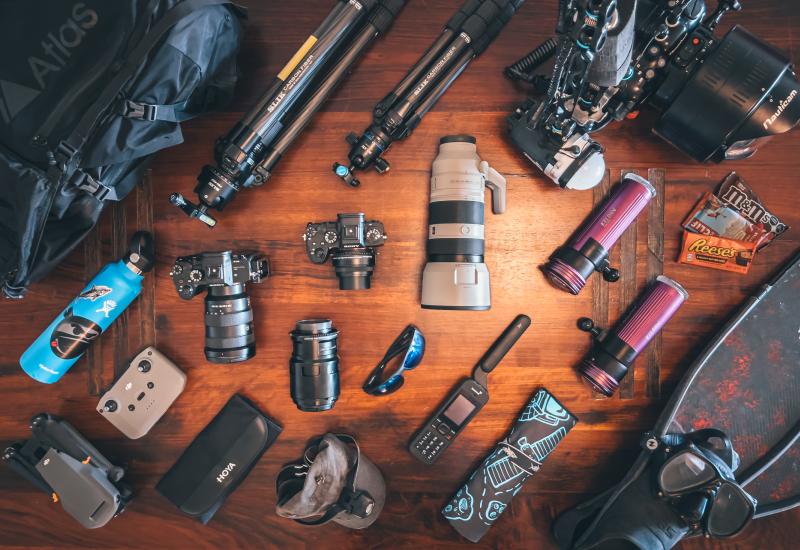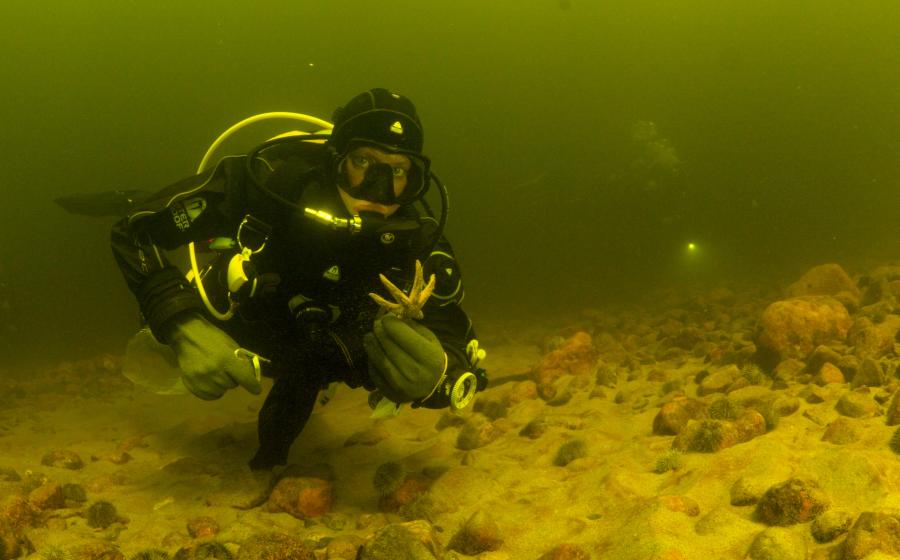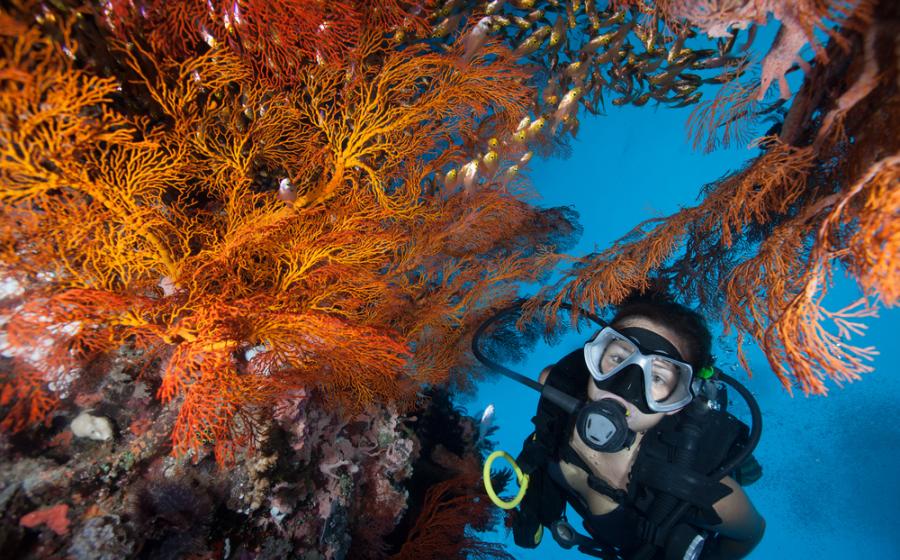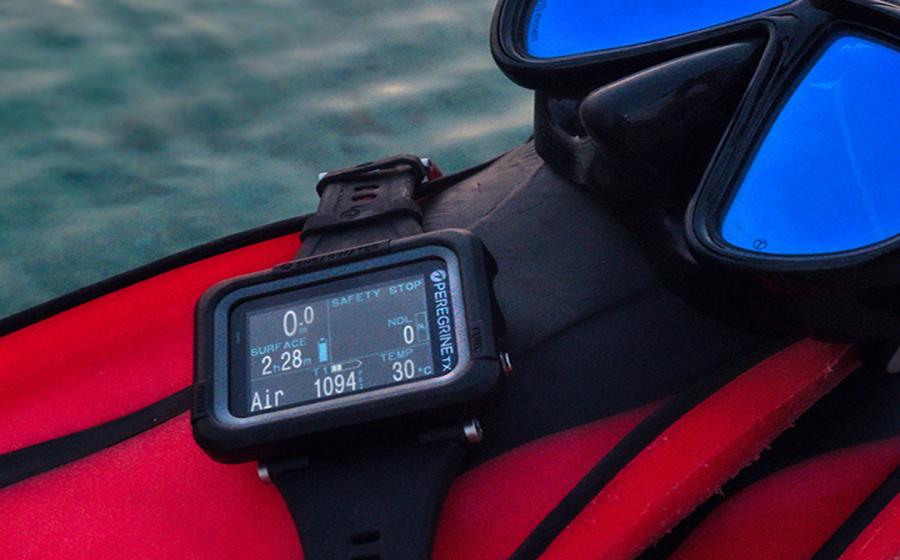How to Take Blackwater Photos
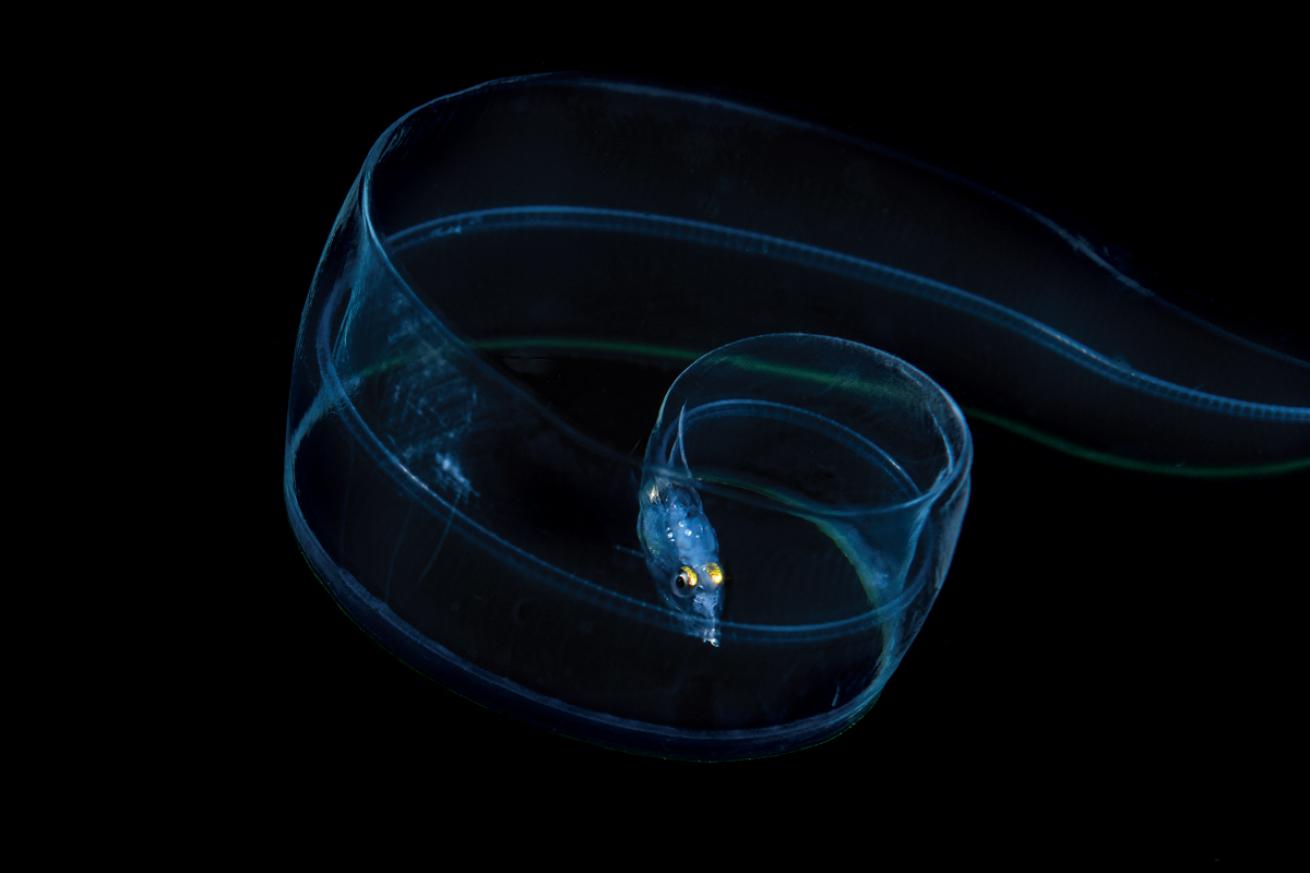
Suzan MeldonianTransparent: You’ll need more light to penetrate transparent critters and get more definition. Direct your light away from white or silvery hotspots.
Welcome to my little alien world. For the past few years, a diving craze has been grow- ing in popularity for those forever seeking the wild and unusual. If you ever find yourself bored with all the ridiculously amazing creatures on the reef or in the shallows, might I suggest black-water diving? This is no normal night dive. This is diving over depth—chasms 750 feet deep or more—drifting late at night in the top of the epipelagic zone and waiting to see what comes by for dinner in order to document the pelagic magic of the Vertical Migration. It’s popping up in destinations all over the globe, such as Hawaii, the Philippines and my own backyard: West Palm Beach, Florida.
Close Encounter
As I submerge into the ink-black water, it’s so dark I can’t see my own hands in front of my face without lights. We’re hovering near the surface in deep water about 5 miles off the South Florida coast, a straight shot south from the Lake Worth Inlet. We begin our descent and set out for an enormous white glowing ball that illuminates the ocean ceiling. Hanging straight down from this ball into the depths, various colored cyalumes mark off every 10 feet so we can visually gauge our depth by sight. Swimming to the light-line, I feel the current drafting my body northward to the ball. But after dropping 20 feet I am completely unaware of the current, except when I notice the ball has gotten away from me. Our job: Stay with the ball.
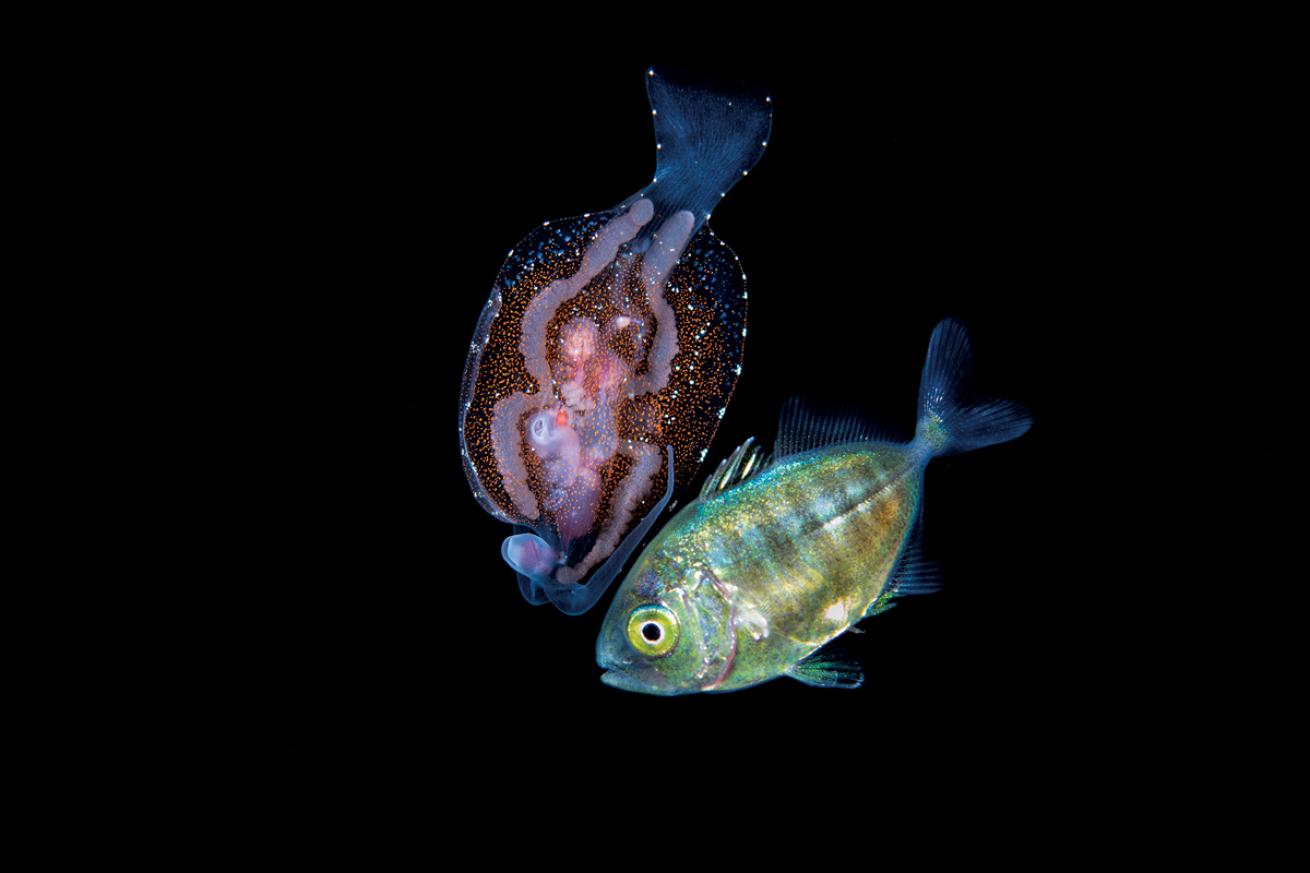
Suzan MeldonianSolid Reflective: Back away from your subject and practice using a kiss of light with strobes positioned slightly outward in this situation.
Suddenly, I feel pressure against my leg. I turn, expecting it to be another diver who has accidentally backed into me. But there is no one there. I look down and barely make out a shadow. Whatever it is returns for another go, brushing my leg again (testing me?).
It’s at least 6 feet long. I still can’t see anything. I wonder if my knocking heart is ringing the dinner bell, exciting my stealthy stalker. I quickly turn on my focus lights, and my stalker bumps me again with gusto, then bolts away with an audible kerplunk. Good for a little adrenalin jolt. OK, I think, definitely a shark. Stay with the group—safety in numbers.
Our group dives down toward the colored glow sticks suspended like a mystical car- ousel underwater, taking positions approximately 30 feet apart at different depths. It takes a few minutes for our vision to adjust to the darkness and the oddly suspended particulate matter that seems to be raining ever so gently.
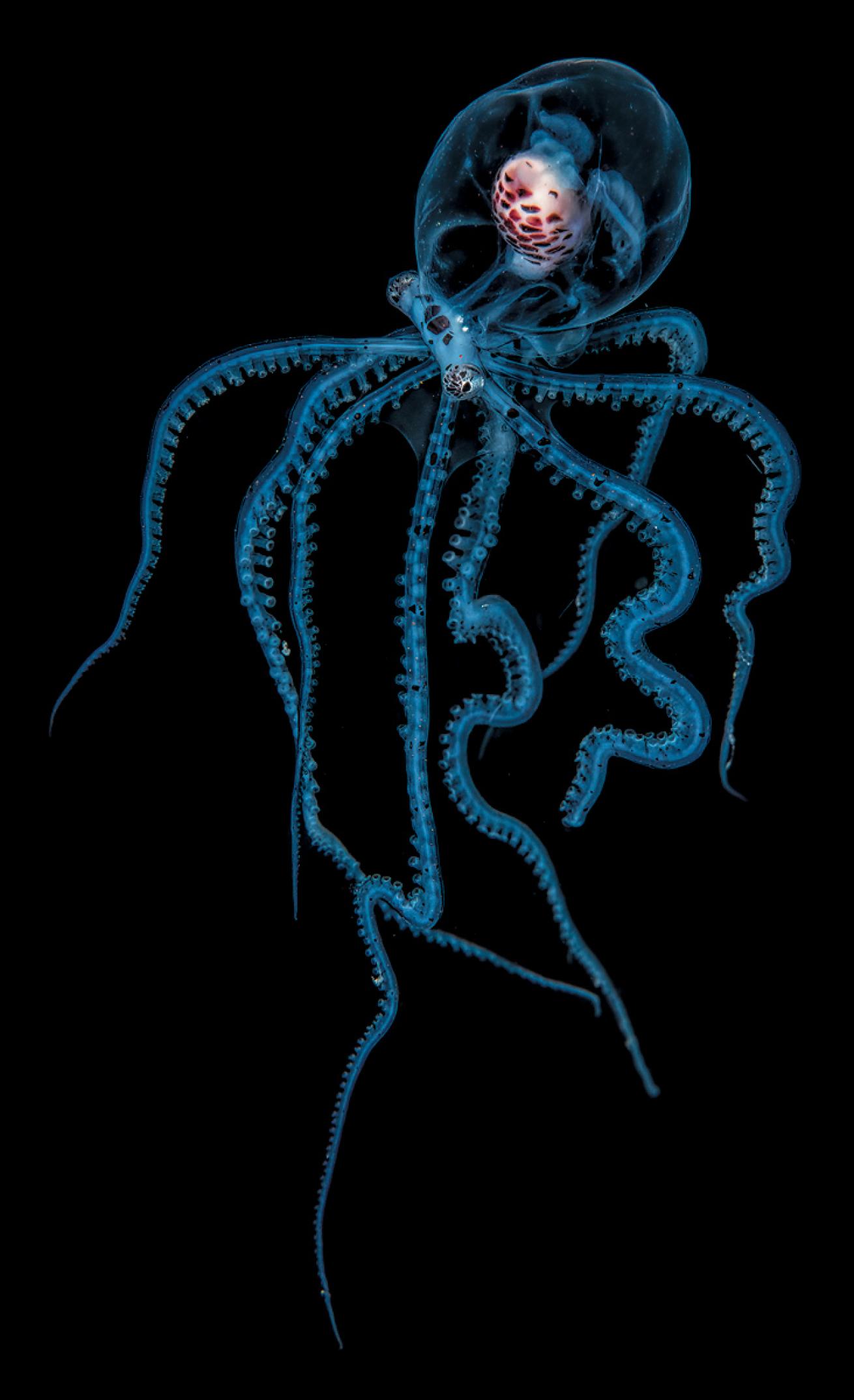
Suzan MeldonianSemi Transparent: Use softer strobes or a higher ISO setting on your camera to capture semi-transparent animals like this larval wonderpus octopus.
Of course, my first thoughts are, Oh boy, this is going to take a lot of editing. Look at all this backscatter! Suddenly a pin light of red whizzes by at warp speed. My heart sings. What was that? Then something else bursts and displays what looks like a mouth full of teeth! I’m on the movie set of King Kong, only miniature. As my eyes adjust to the darkness, suddenly it is very apparent that the three-ring circus of wild has begun. It’s not all space junk. It’s alive! It is just sleeping until my lights wake it into action. This is the largest migration on Earth, the Vertical Migration, and it goes on every single night in every ocean! Splashes of color, spectacular formations and designs, synchronized swimming—I’ve been let loose in a candy store.
Every single dive presents different sets of creatures de la nuit. There seem to be concentrations of similar critters in pockets of the water column. Some nights it’s siphonophores, some nights it’s wafer-thin larval flounders. One night, everyone sees larval mantis shrimp on the north side of the glow ball. Another night there’s an entire collection of mature jellyfish extending their tentacles 30 feet like harp strings in the dark. Last week we were pelted by thousands of tiny juvenile squid moving like a flock of birds evading a predator. Suddenly a wicked-fast school of mackerel dive-bombed the squid, some slamming into us divers too slow to get out of the way. Sometimes there is so much activity that you just need to stop and watch the show, all the while reminding yourself that this is all going on in the pitch black of night.
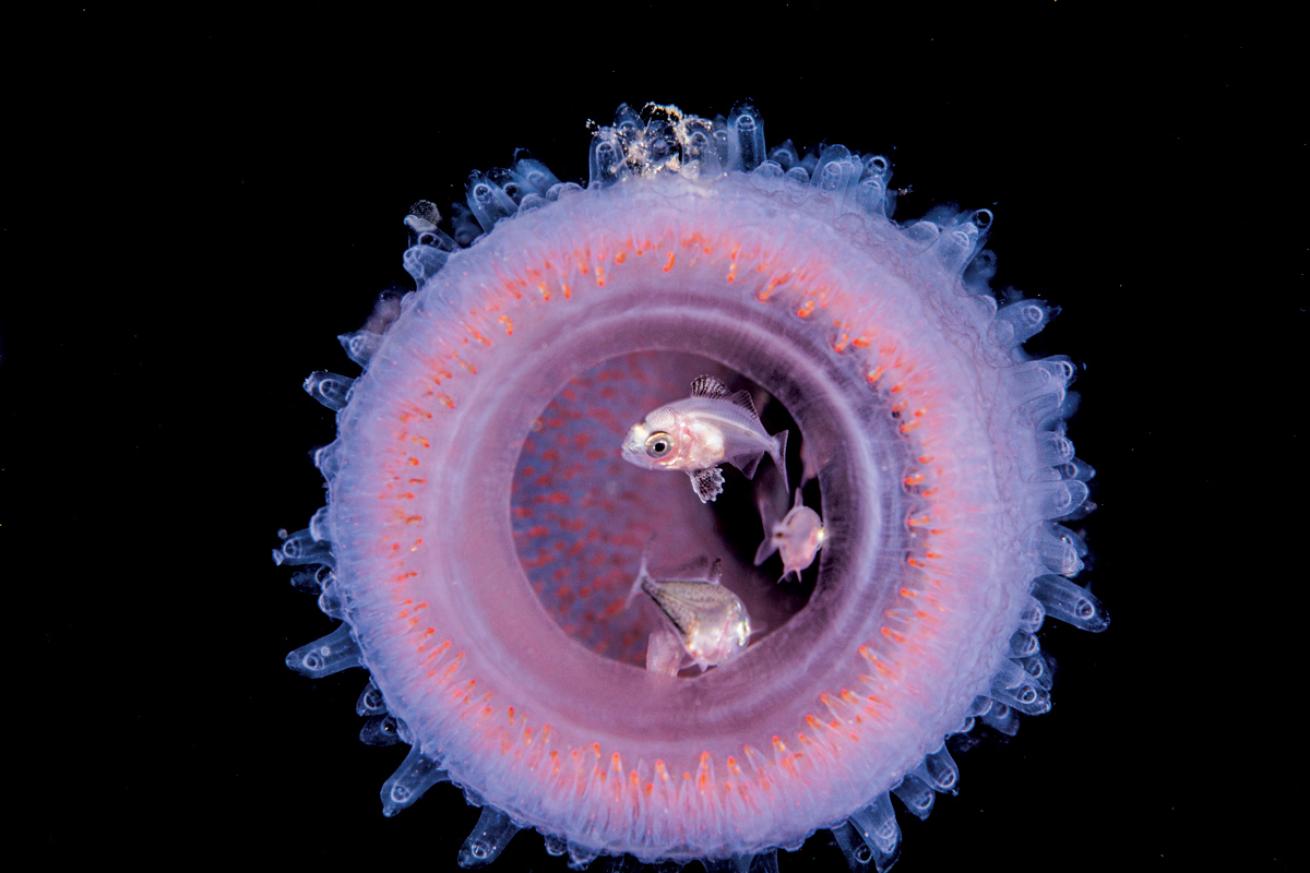
Suzan MeldonianSolid Color: Get closer, but lower your strobe output and open your camera’s aperture to compensate. Use a kiss of light on reflective parts.
Shot In The Dark
Black-water is definitely one of the most challenging methods of underwater macro photography. Especially since most of the cool stuff is translucent— your strobe lights just shoot through the animals and keep on truckin’ into the blackness. Your focus light stunts a foot away from you as the darkness eats it. Gone. Just like that. So focus on what’s right in front of you, and don’t lose it. Keep it in your sights until you get your shot. Otherwise, blink and it’s gone.
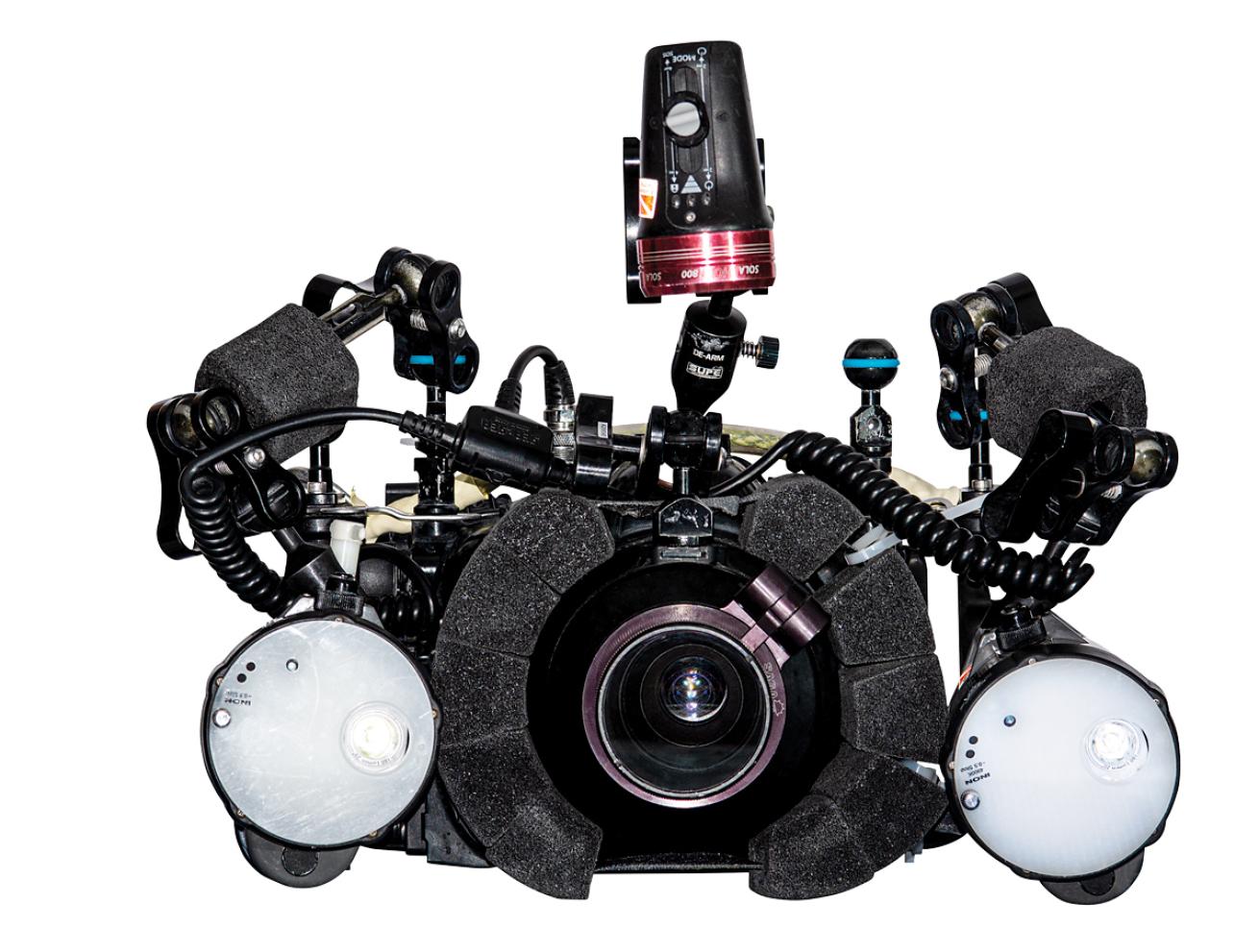
Suzan MeldonianBegin your dive with both strobes facing forward, set behind the lens port to reduce backscatter. I recommend using medium power.
First questions I get are, “How do you see this stuff? And how small is it?” Answer: Mostly smaller than a dime.
Allow your eyes to adjust to the darkness and other sources of light. Scout the immediate area for specific movement. The money shots are the animals in their larval stages. The hard part is getting them in focus. Perfect buoyancy is key. Relaxed breathing helps too; you can’t go blowing bubbles heavily or you’ll blast your subjects to smithereens. What feels like a soft whisper to you is a Category 5 hurricane to these tiny critters. Every movement you make creates a power wake.
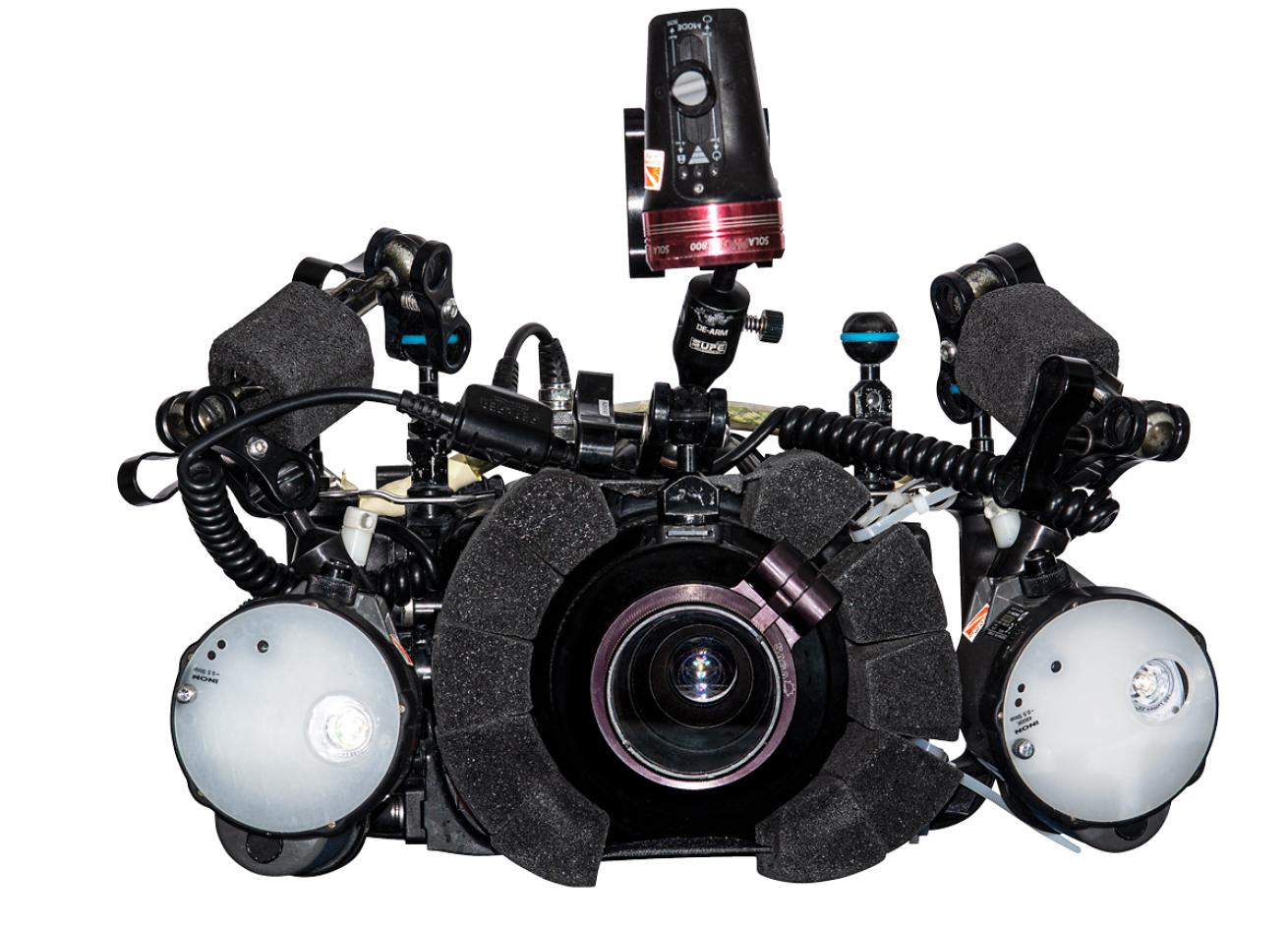
Suran MeldonianFor kiss of light, make a very minor adjustment in strobe position from straight forward to diagonally outward—maybe half an inch.
What do you need to do this? I suggest starting with a 60mm or comparable lens. You absolutely must have a strong focus light, preferably two. Longer macro lenses take too long to nail the focus as the subjects are fast and furious. Also, realize that light travels through translucence, so you need to bump up the focus light in order to get the focus to lock on. Set your camera’s light sensitivity anywhere from 100 to 400 ISO, depending on your camera. A DSLR or a camera that can focus on a dime is preferable, but quite a few great shots have been accomplished with some of the newer point-and-shoots. Things are buzzing about and hardly stay still long enough to get the focus to land. I recommend starting with jellyfish as they don’t run away so fast, giving you the chance to figure out your settings.
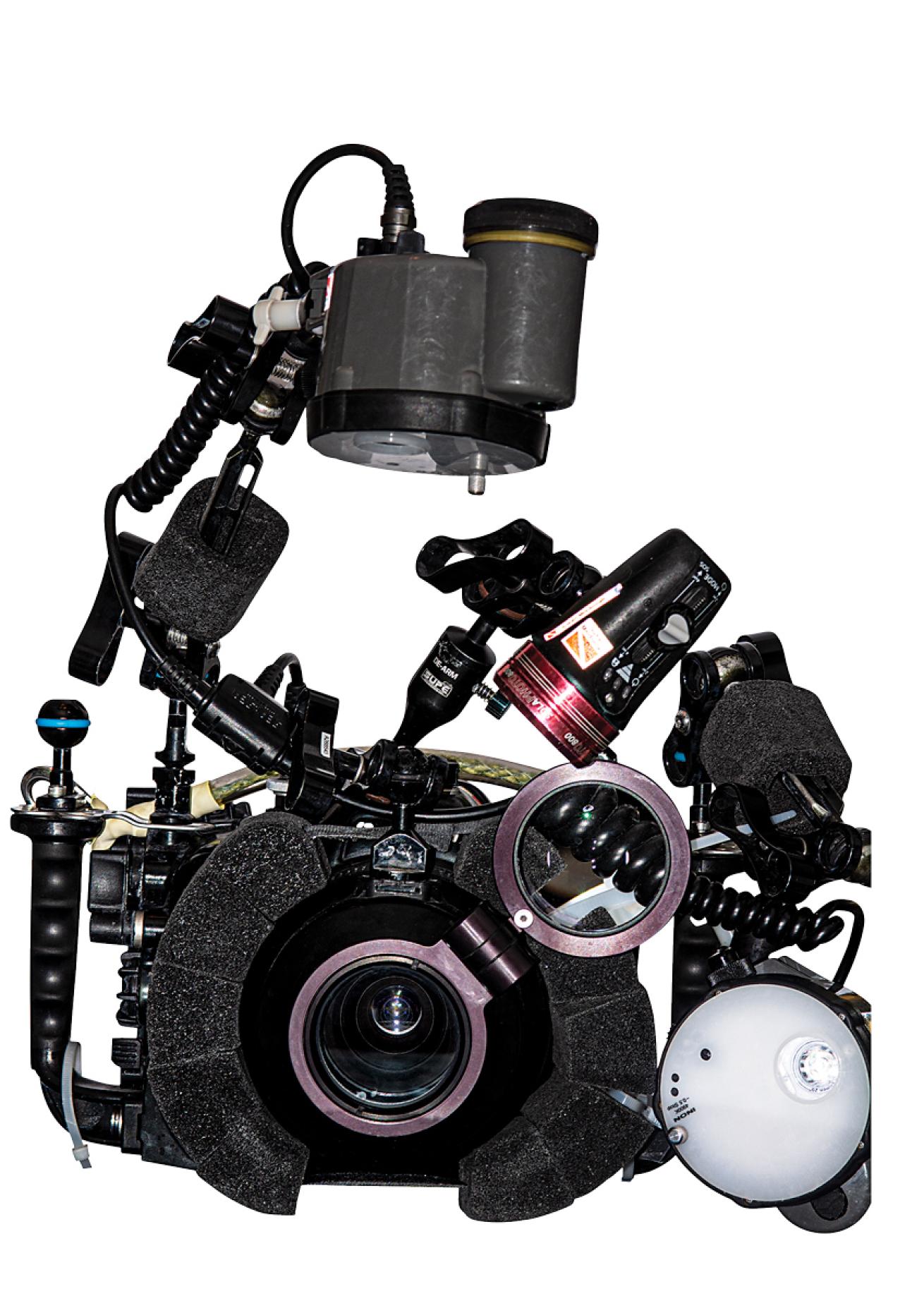
Suzan MeldonianI call this the jellyfish setup. Light from above, allowing the strobe to funnel through the subject’s gelatinous parts to light just what is necessary. The side light helps to illuminate the heart of your subject.
To reduce backscatter, it’s all about strobe positioning. I’ve found that facing strobes forward and hugging the port works wonderfully. For focus lights, I want something 1,200 lumens or brighter, with optional red light and a battery life of about two hours. Larval fish are very skittish; often you’ll want red light to photograph them or they’ll dive deep to escape. Beware that red lights can sometimes be disorienting when you are trying to photograph subjects on black-water dives. White subjects become red or pink, depending on their opacity, and more difficult to see in the dark. Your brain needs to adjust to this lower power of light. Avoid looking directly at other photographers’ red lights. The residual effect on your vision can leave you seeing flash spots once you fire your strobes, which can hinder your ability to focus. You may also experience a dark spot while the rods in the back of your retina readjust to the light sensitivity, temporarily blinding you.
I find there are four types of critters: transparent, semi-transparent, reflective and solid. The reflective bits are the most challenging. You may need to move your strobes out or back off the subject to avoid blowing out the shot. I typically start my dive set up at f/13, 1/250, ISO 160. You’ll find yourself truly starting to understand what depth of field equates to with regard to your lens of choice. Take the time to find that distance-to-subject sweet spot for your rig.
Many black-water critters seem to be unaware that there is any light, while some of the more advanced larval stages are definitely attracted to it. If there are too many, you might have to turn off the lights to thin the herd or else be consumed by aliens of the deep.
Back on our dive, we no longer notice the white flecks raining down. We are now able to home in on subjects or a streak of color. This is the planktonic world, the beginning of life in the ocean. Luminous creatures are pulsing open and closed, then dangling motionless, indistinguishable from space junk, before suddenly jumping back to life, splaying tentacles into spectacular formations as if orchestrating an underwater code. Maybe this is their way of communicating. You soon realize that you must keep your eyes fixed on your subject, trigger ready, and of course, wait for it.

